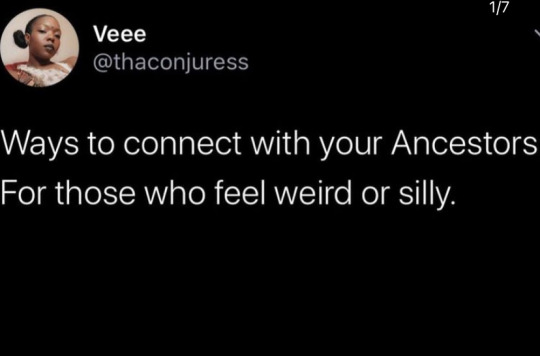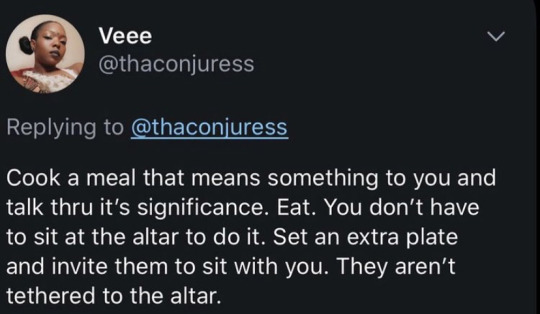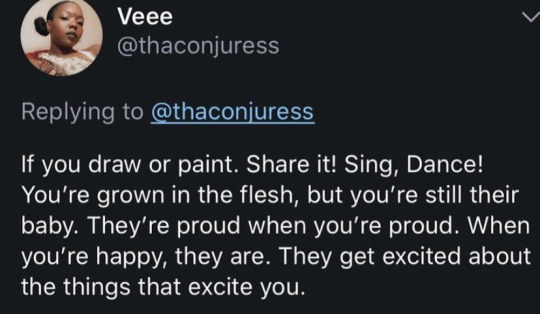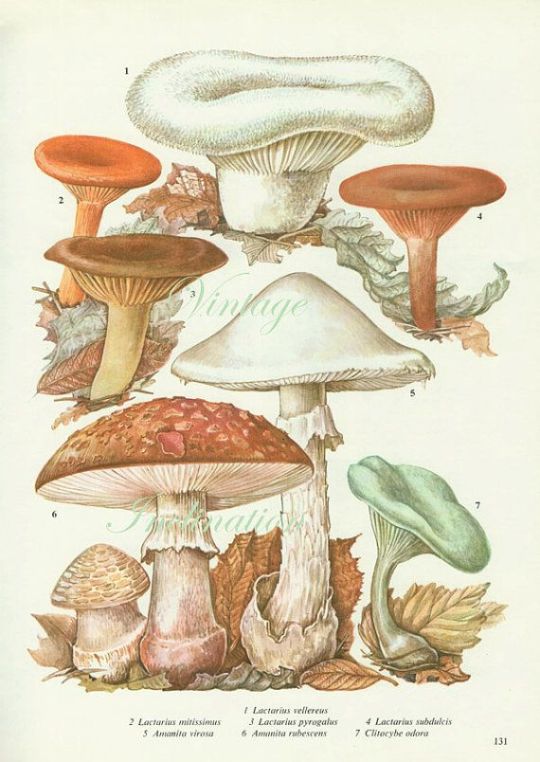Just a baby witch starting out and making a blog to just collect references
Don't wanna be here? Send us removal request.
Link
Youtube Channel: Angela’s Symposium
A wonderful channel that discusses the occult and paganism (among other, related topics) from an academic point of view.
11 notes
·
View notes
Text
Why You Should Keep Track of the Tarot Cards You Pull
People will often notice patterns to the cards they pull - you’ll notice that certain cards come up more often. This tends to be based on a feeling though, rather than any real data about which cards you’ve pulled - and the real data may surprise you.
I’ve kept track of the cards I’ve pulled in my single card readings over the past three months, and here are some things I’ve noticed:
I pull one card more frequently than any other card. In my case, that card is The Magician. It’s really useful to know - not just suspect - that one card turns up constantly for me.
Some cards don’t actually appear as frequently as I think they do. I recently pulled the Nine of Pentacles and thought, ��Again?? Why do I pull this card so much??” but when I look at the actual data… I’ve pulled other cards way more frequently. I think it’s a form of the Baader-Meinhof effect - a card can stick in your brain for some reason and you remember it as appearing more often than it actually does!
There are interesting things about the cards that I don’t pull. In three months, these Major Arcana cards have never come up at all: The Emperor and The Devil. I can look at the data of what archetypes don’t appear in my life and draw some interesting conclusions. I’ve also not drawn a single court card (page, knight, queen, or king) from the suit of swords - swords tend to deal with conflict, which I maybe have less of during this particular time in my life
I can identify which suit and which numbered cards appear the most and the least in my readings. While the totals of Swords, Wands, Cups, and Pentacles I pull are pretty close to even, Wands eke out a little bit higher total than the others. Cups and Pentacles are tied, with Swords coming in last. If I didn’t have this data, I’d probably assume I pull Swords the most - because they leave the biggest impact on me when I do pull them! Of the numbered cards: I pull Aces of any suit the most, and Twos of any suit the least. This makes for some interesting patterns: The Magician is sort of the “Ace” of the Major Arcana, as well. Aces are about a very singular willpower whereas Twos are about partnership and duality. Through this pattern I can identify the focus the cards have on my life at this particular point in time.
I pull Major Arcana cards more than is statistically likely. The Major Arcana makes up 28% of the deck, but 39% of my pulls. The Major Arcana are more associated with long-term messages, and so my life may have more long-term type changes needing to be made during this period.
This is a quick guide to how you might interpret some of the overall themes you notice: Minor Arcana: temporary, easily changed, daily life, current situation Major Arcana: long term, archetypes, themes, life lessons, current lesson Wands: spirituality, inspiration, determination, strength, intuition, creativity, ambition and expansion; energy, motivation and passion. Cups: love, feelings, relationships and connection; emotions, intuition and creativity Swords: action, change, force, power, oppression, ambition, courage and conflict; thoughts, and words Pentacles: work, business, trade, property, money and other material possessions Aces: new beginnings, news, movement in a positive direction Twos: duality, connection Threes: creation, creativity, growth, action Fours: stability, structure Fives: tension, conflict, challenge Sixes: relaxation, harmony, reevaluation Sevens: mystery, disruption, adjustment Eights: action, movement, growth, change Nines: contemplation, reflection, looking to the next step Tens: conclusion, culmination, new beginnings, complexity Pages: youth, vitality, fascination, learning, and focus Knights: adventure, energy, missions, conviction, willfulness, recklessness Queens: curiosity, openness, expressiveness, creativity, flexibility Kings: authority, leadership, expertise, mastery, inflexibility
7K notes
·
View notes
Text
ancient greek masterpost!
I’ve been collecting resources to aid in teaching yourself ancient greek for about a year now, and here they all are!
Where to Start:
List of places to start
How to guide
Intro to the language
Info about dialects
Info on learning homeric greek
Lexicity, has tons more links and helpful guides
Pronunciation (Youtube)
Textbooks:
Google drive with TONS of textbooks, mythology/culture books, and reference guides
Companion site to Mastronarde’s textbook
Mastronarde textbook answer key
Companion site to the Teach Yourself book series
First Greek Book textbook download link
Learn to Read Greek textbook
Companion site to Athenaze
A First Greek Course
First Greek Grammar Accidence
Greek Grammar
Smyth’s Greek Grammar
Grammar, Guides and Practice:
Grammar info
Grammar review
Vocab and grammar drills online
Worksheets on conjugations and declensions
Pronunciation guide
Parts of The Odyssey read aloud in ancient greek
Parts of The Iliad read aloud in ancient greek + Another
The whole Iliad in ancient greek
Other:
Dictionary
Dictionary and texts
Trojan War dates
Some books of the iliad
Some books of the odyssey
Sappho original text
General info about Sappho
Ancient greek music reconstruction and info
Specifics^: Music and theory
More music info
Accents and other help (Youtube)
*Updated as of Jan. 9, 2016
7K notes
·
View notes
Text

I thought of something last night when I was high. Idk
@orriculum , I think you know what I mean.
182 notes
·
View notes
Note
We're you always confident on commanding demons? How did you find the confidence?
Honestly no. The first time I did it my knees were knocking. I didn’t light enough candles so it was really hard to read the book in front of me (and I only had the Crowley-Mathers edition which is terrible lol). I dripped blue candle wax all over the copy which I could barely keep open because I was holding the knife in my other hand. I did it without using the proper circle wearing a ratty graduation robe with the seals of Solomon barely sewed on. The conjuring itself did work, but the atmosphere became immediately incredibly creepy and I felt the urge to flee the circle very strongly. I wanted to run out of the room and slam the door shut behind me. The hairs on the back of my neck were completely on end. The room was thick with smoke and I heard the voice of the demon ask me quietly what it was I wanted. Directly in my ear. Clear as day.
I freaked out and banished immediately. I didn’t bind it or ask it for anything–I just wanted to wake up from what felt like a bizarre scene from a horror movie come to life. (Which, for the record, you should never do. Always finish the ritual and always push your intention through. Finish what you start.)
There were consequences because of my ineptitude. The next day at work as a paralegal I had to sort through pictures of severely mangled dead children from a go kart accident.
I had unrelated but extremely gory and violent nightmares for a week after as well.
Considering the circumstance, I am very lucky I was not injured, or some other kind of extreme misfortune. I was underprepared, with almost none of the right tools, very undirected, except for the fact that the process fascinated me and I had a deep, passionate urge to understand it from within. Magically speaking I was a baby and threw myself into the most intense thing I could because I’m…like that. How I entered infernal magic is not how I would suggest others do so. I was a novice and I was fortunate not to injure myself. Others are not so lucky. It’s not beginner work, but I was a little insane. Maybe I still am. I continued because of my intense passion for infernal magic. Something about it, even after that experience, thrilled me. After realizing I could make massive material gain from the procedure, it excited me even more, despite the experience itself being incredibly raw. I was determined to make something of it. To conquer it.
The circumstances with which I returned to evocation was much better. I had spent some time studying the system a bit more and having a much better theory of mind about it. Mostly this was with the help of a much more seasoned and older goete who was close to me (and still is. We’re thick as thieves.) Now I have everything, right and proper–alb, chasuble, a proper knife, a lion skin belt, a vessel of brass, and blessed chalk. Having those things definitely makes a difference and the difference is tangible. I feel armed, like I’m carrying weapons. I’m not walking into a knife fight with my bare hands anymore, so to speak.
My next evocations were creepy but more controlled due to a little guidance and having the proper tools. That made me feel confident. Probably even more than the proper tools is that now I have a much more developed personal relationship with my Catholicism and how it intersects with my infernal work. At the time of my first evocation I was much less Catholic; not as in touch with my roots. I actually used to really dislike my Catholic background but after reading many of the Classical grimoires I learned what a boon it was to keeping me safe and sane. I worked on revisiting some of my childhood spirit allies and cultivating those relationships and that made me a stronger goete, along with prayer, and receiving the sacraments. I know of successful goetes who aren’t Catholic but for me it’s a comforting and spiritually nourishing experience that I can draw from the earliest memories of my spiritual life. And the power of Abrahamic protection is very powerful as a system.
Then there’s just the simple matter of constitution. It probably takes a certain kind of person to plow through the work that is infernal magic. I’m naturally a very martial and aggressive person who enjoys things like fighting and confrontation. I draw deeply from my aggressive nature when constraining infernal spirits and my fear leaves me, and I pair that aggression with the knowledge that I am completely prepared to meet with these spirits because I have everything I need and have followed the proper procedures. And even if I do feel fear, it is not beneficial to show it to the spirit. Unless you are dealing with a powerful king, demons cannot read your mind, and if you express no fear they will assume you are not afraid. Expressing fear is a weakness that can be exploited and I do not recommend it.
In addition to my severe nature my fear does not outweigh my desire to acquire whatever it is I am asking of the spirit. My desire to dominate my life, to have the things that I want, to live completely freely, will always overcome my fear, no matter how potent it may be in that moment standing in the circle. That quality is what makes a good magician. When things get spooky you have to decide what is more important.
Lastly, goetic evocation will always range from “mildly disconcerting” to ��pretty spooky” to “wildly terrifying” and you never really get used to it. Even the most seasoned of us don’t. As I work my psychic development the evocation process will also be much more vivid, so I will have to re-adjust myself to be ready for progressively more intense experiences as I become increasingly perceptive.
This was a very intense ask for me and I hope it encourages those who feel they are ready and share my passion but also perhaps gives those who are not pause to reassess.
Thank you for your question.
339 notes
·
View notes
Text
yknow what i absolutely love… those trees with cavities full of water and dead leaves
60K notes
·
View notes
Photo

I’ve been seeing a lot of tarot spreads on here that focus solely on a person’s past lives, but I haven’t seen a lot of spreads that show how two people’s past lives were connected. So, I came up with this spread and it’s been extremely insightful!
Also, I should add that this spread isn’t limited to romantic relationships/soulmates. You can use this for family members or close friends!
Person 1 - Present life
Person 1 - Past life
Person 2 - Present life
Person 2 - Past life
Bond/Connection/Relationship you had during your past lives
Why you keep meeting each other
What you should both work on in this life
Outcome of relationship
You can use significator cards if you wish for 1 and 3, but I personally didn’t need them for this spread.
3K notes
·
View notes
Text
Cannabis Witch Tip
Use really old nasty bong water for curses or war water.
123 notes
·
View notes
Text
The Witches Ladder
Witches ladders (also known as witch’s ladders) are a type of knot magic that can be used for a wide variety of purposes. They are commonly made by braiding or knotting cords together while incorporating other materials that represent the intention of the creator. Witches ladders can be easily customized for every practitioner and used for nearly any purpose, making them a very versatile and convenient talisman to create. Witches ladders can be used for purposes like attracting or manifesting things, creating a more positive environment, warding off negative entities or energies, protecting yourself or others, or banishing certain behaviors or individuals, just to name a few.

To make a basic witches ladder, you will need:
- Several cords of equal length in colors of your choice
- Whatever materials you choose to weave into the cords (such as feathers, bones, herbs, hair, flowers, seashells, ribbons, beads, hag stones, sticks, crystals, keys, charms, etc.)
Optional but helpful:
- Tape
- A ruler
Some other ideas: You can incorporate pieces of paper with sigils drawn on them, drawstring bags filled with herbs or crystals, or personal symbolic items that have been made from clay or another material. If you are making a witches ladder for an individual, you may wish to include a taglock (a personal item that is strongly associated with the target) to further bond the person to the talisman. Taglocks may include hair, jewelry, etc. Depending on your practice, you may wish to incorporate numerology into your witches ladder by using a specific number of knots, number of cords, or number of items used.
For my witches ladder, I used thick dark green yarn, twine, seashells, goose feathers, ribbon, a pine cone, and a sand dollar. I chose to arrange my goose feathers with the smallest ones at the top and the largest ones at the bottom. I also decided to make a double witches ladder purely for aesthetic reasons, but you can stick to one or make as many as you want.

Creating the witches ladder
1. Start by gathering your materials and getting your cords ready to knot or braid. It may help to tie the cords together on one end and tape the knotted end to a table or another surface. I found that doing so helps to prevent the cords from getting tangled in the process and it helps maintain a nice tension while braiding.
2. As you braid or knot your cords, begin adding your chosen materials. You may wish to recite something or chant as you are doing this, but it is not necessary. Depending on how many items you are using, you may wish to space them out evenly. For this, a ruler may come in handy. In my own experience, I have found that certain materials such as feathers, herbs, flowers, and certain bones can be difficult to braid around. It may be helpful to braid the cords first and then insert your objects into the braid later on.
3. Continue braiding or knotting until you have made your witches ladder as long as you would like it. To finish your witches ladder, you may choose to simply tie off the cords, or you may choose to add something extra to the end. I chose to add a pine cone and ribbon to one of my witches ladders, and a sand dollar to the other. Finish off your witches ladder however you see fit.

4. Hang your witches ladder. You may wish to hang it near a doorway in your home, near your bed, or even outside. The best location for your talisman will depend on both it’s intended purpose and your personal preference. If you have cats or other mischievous pets, it may be a good idea to hang your witches ladder up high or out of their reach.
-theowloracle
Please do not remove source
#talismans#traditional magic#knot magic#witches ladder#protection#area protection#home protection#ref
11K notes
·
View notes
Text

Here we have yet another installment in my #annobib series of book recommendations organized by category! This one focuses on ceremonial magick.
This includes so-called “high” magick techniques, ritual and lore descending from the European grimoire traditions, the Hermetic Order of the Golden Dawn, and Thelema. Witches, consider reading some of these; I’ve noticed a lot of us don’t get much exposure to these systems!
Modern Magick, by Donald Michael Kraig. I received this as a gift several years ago. It is essentially a workbook meant to be completed slowly, step by step, and while the format will not appeal to everyone, it’s a good easy-to-read introduction to ceremonial magick.
Familiar Spirits, by Donald Tyson. Though geared towards ceremonialists, any practitioner can likely learn a thing or two from Tyson’s interesting stroll through the whys and wherefores of spirit work and thoughtform creation. This is by far the best book I’ve seen on the topic of familiar spirits.
Secrets of High Magick, by Francis Melville. The most recent edition of this (the one I own) is lavishly-illustrated and full of rudimentary, yet useful information. He stresses the basics of ceremonial practice, and his writing style is very accessible. Highly recommended for absolute beginners.
My Life With The Spirits, by Lon Milo DuQuette. This is a memoir of a ceremonial magician, but it gives a good look at the magickal mindset in a highly developed form from someone who’s experienced quite a lot. I have major issues with DuQuette’s approach to Qabalah, but his memoirs are worth a read.
The Essential Enochian Grimoire, by Aaron Leitch. If you are interested in the Enochian system of Angelic magick, but don’t know where to start, this book is a good bet. Heavy on history, it provides a lot of content for the goings-on that led to the Enochian system, as well as practical advice for beginning Enochian scrying.
Ascension Magick, by Christopher Penczak. This is a good book for those who’re already familiar with witchcraft, but want to jump into ritual magick, as well. It has a very broad scope and not as much detail as one might want, but is good for beginners.
Portable Magick, by Donald Tyson. No tools? No problem! In this book, Tyson describes a method of working Golden Dawn-style ceremonial magick using only Tarot, thus making it excellent for mages on the go or those who practice in secret.
Aleister Crowley’s Illustrated Goetia, edited by Lon Milo DuQuette. An updated, thoroughly readable primer on working with the seventy-two Goetic spirits. Emphasizes the versatility of Goetic evocation, while also being realistic about what’s possible with it.
The Complete Book of Ceremonial Magick, an anthology. A good, broad introduction to ritual magic, helpful for those who already practice a form of willworking but want to make the jump into ceremonial techniques.
Thank you for reading, and I hope you’ll check out some of these books! Also, check out the rest of my #annobib series of book recommendations here!
Please note that the Amazon links above are affiliate, meaning I actually get a bit of pocket money if you buy the books via the links! This is desirable, of course, because it allows me to purchase more Red Bull to fuel my writing.
176 notes
·
View notes













